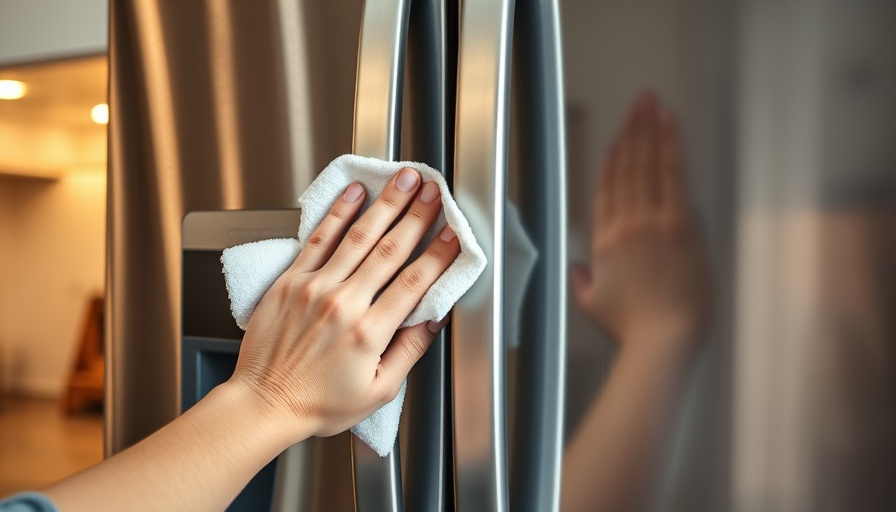
Why Is Cleaning Stainless Steel Important?
Stainless steel appliances elevate the aesthetics of any kitchen, providing a sleek and modern feel. However, over time, they're prone to staining and dullness caused by fingerprints, cooking spills, and water spots. Regular cleaning not only enhances their appearance but also extends the life of your appliances, making it essential for homeowners and renters alike.
Expert Recommendations for Cleaning Stainless Steel Appliances
According to kitchen renovation expert Steven Pizollo, a straightforward cleaning routine is key. Here’s a step-by-step method that anyone can incorporate into their kitchen cleaning regimen:
- Dampen the cloth: Use a microfiber or soft terry cloth - it should be damp, not dripping, to minimize water spots.
- Add dish soap: Squeeze a small amount of mild dish soap onto the cloth to initiate the cleaning process.
- Wipe the surface: Gently wipe down your appliance following the stainless steel grain to avoid streaks.
- Rinse with water: Take another clean cloth dampened with plain water to wipe away any soap residue.
- Dry and buff: Finally, using a dry cloth, buff the surface to achieve a streak-free shine.
Cleaning Products You Can Trust
When it comes to selecting cleaning products, avoiding harsh chemicals is crucial. Architect Dusko Medakovic recommends sticking to mild detergents. Here are some effective options:
- Soft microfiber or terry cloths
- Commercial cleaners specifically made for stainless steel
- A water and baking soda mixture; simply mix a teaspoon of baking soda into half a liter of warm water for a gentle solution.
- For a more environmentally friendly option, consider a non-toxic cleaner like hydrogen peroxide. A light spray followed by buffing with a microfiber cloth can do wonders.
DIY Methods for a Green Clean
If you're inclined towards DIY cleaning methods, many natural solutions are not just eco-friendly but also effective:
- Baking soda and cooking oil: Mixing these two can create a paste that cleans stains and adds shine.
- Vinegar solution: For a quick cleanse, use a solution of equal parts water and white vinegar. Spray, wipe with a cloth in the direction of the grain, and buff dry.
- Olive oil: A small amount of olive oil on a cloth can help polish the surface, leaving a protective layer while highlighting the appliance's natural luster.
Avoid These Common Mistakes
While cleaning stainless steel, several practices can inadvertently cause damage:
- Abrasive cleaners: Avoid steel wool and harsh scrubbers, as they can scratch the surface.
- Chlorine bleach: This can discolor stainless steel and should never be used.
- Wiping against the grain: Always clean in the direction of the grain to prevent scratches and streaks.
The Future of Stainless Steel Maintenance
As trends in home design continue to evolve, the need for effective cleaning solutions remains constant. Emerging cleaning solutions that focus on sustainability and ease of use will play a significant role in how homeowners maintain their stainless steel appliances. Factors such as Eco-certification or using plant-based ingredients may become prerequisites for cleaning products in the market.
Conclusion: Keep Your Stainless Steel Appliances Gleaming
Whether you are in Dallas, Phoenix, or Tampa, using the right methods to clean your stainless steel appliances is essential for maintaining their beauty and durability. Armed with expert tips and effective DIY solutions, you can ensure that your kitchen remains as stunning as the day you installed those appliances. Take pride in your minor yet impactful tasks, and keep your space shining bright!
 Add Row
Add Row  Add
Add 



Write A Comment